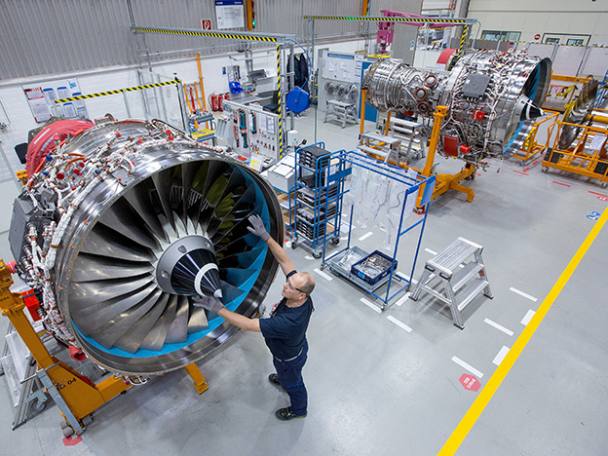As airlines around the world grounded their fleets in response to the Covid-19 pandemic, Rolls-Royce (RR.) saw its widebody engine flying hours (EFH) collapse by 50 per cent in the six months to 30 June, with a 75 per cent drop in the second quarter. It is guiding that EFH will finish the year down by around 55 per cent, recovering to a 30 per cent shortfall in 2021. This is significant because of how the group monetises its engines – while an engine is typically sold at an average loss per unit, the aim is to make this up over its lifetime by collecting revenue from the number of hours it flies.
Lower EFH revenue as well as fewer engine deliveries contributed to a £3bn free cash outflow in the first half of the year. This was also impacted by a £1.1bn hit from halting ‘invoice factoring’ – this is where trade receivables are sold to banks who go on to recoup the money owed from suppliers so that Rolls can receive cash more quickly. The group is pointing to a £4bn free cash outflow in the second half of the year.
The shares tumbled last week after a report by Bloomberg suggested that the engine maker was looking to raise funds – options cited included a £1.5bn-2bn equity raise and selling assets such as Spanish subsidiary ITP Aero. At the time, Rolls’ response was that it was “reviewing a range of potential options to strengthen our balance sheet”. It reiterated that statement today and no such measures were revealed. For now, having secured a new, undrawn, £2bn term-loan facility, it is sitting on £8.1bn of liquidity and believes this should allow it to “absorb the near-term cashflow pressures”
Lower passenger demand for travel, means lower airline demand for new planes. As plane makers such as Boeing (US:BA) and Airbus (FR:AIR) cut aircraft production rates, Rolls trimmed its full year guidance for widebody engine deliveries from 450 to 250 in May. It believes it is still on track to meet this target, having made 130 engine deliveries in the first half of the year. The group predicts it will take several years for activity in commercial aerospace to recover to pre-pandemic levels. Adjusting to this new environment, it is undertaking a “major reorganisation” of its business – including cutting almost a fifth of its workforce – in order to make annual savings of at least £1.3bn by the end of 2022. Rolls says these measures will enable it to return to positive free cash flow of at least £750m in 2022.
But the group has warned that the poor medium-term outlook could spark non-cash impairments at the half year stage as it adjusts its contract accounting assumptions and the carrying value of its engine programmes. Meanwhile, anticipating lower US dollar-denominated cash receipts than its hedged position, it is closing out $10bn of its hedge book. This will result in £1.45bn of cash costs over the next seven years.
Adding to these troubles are fresh issues with the group’s Trent 1000 engines, which are used to power Boeing’s 787 Dreamliner jets. The European Union Aviation Safety Agency (EASA) plans to issue an ‘airworthiness directive’ – a notification of a safety deficiency that must be corrected – regarding potential cracking of its low pressure turbine discs.
The Trent 1000 has been a significant headache for Rolls in recent years, centred around blade deterioration. Aircraft have had to be grounded for servicing, although the group has achieved its aim of reducing the number of Trent 1000 groundings to the single digits. It booked a £1.4bn exceptional charge in 2019 for compensation costs and provisions against future losses, and anticipates total cash costs for Trent 1000 in-service issues will reach £2.4bn between 2017 and 2023.









